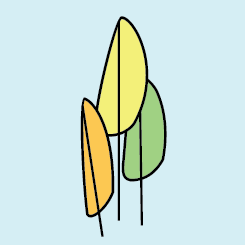
Celebrating Community Collaboration: Rosewood’s Commitment to Nature Conservation

In the heart of Southeast Saskatoon lies a vibrant community pulsating with life and brimming with natural wonders—the Rosewood Community. Nestled within its embrace are 65 acres of wetlands, green spaces, and natural trails, forming a haven for both residents and wildlife alike. Namely these areas are Adams, Bitz, Mackay, Struthers, Swick, Glen Penner, and Secondary Core Parks!
One of the key players in preserving this natural beauty is the Rosewood Community Association, whose unwavering dedication to environmental conservation has been nothing short of remarkable. Their recent collaboration with the Friends of the Saskatoon Afforestation Areas for the City Nature Challenge from April 26 to 29 stands as a testament to their commitment to protecting and celebrating nature.
The Rosewood community boasts an impressive array of natural assets, including the Rosewood Pocket Park—a 1.64-acre oasis of tranquility set to bloom into life this spring. Residents will soon find themselves immersed in the sights and sounds of nature as they explore its lush trails and serene conservation areas.
But the beauty of Rosewood extends beyond its borders, as it is located in Southeast Saskatoon and bordered by the breathtaking Hyde Park naturalized area. Spanning 65 acres, this award-winning wetlands design is a testament to the city’s and community’s dedication to preserving native vegetation and promoting biodiversity.
In the words of the City of Saskatoon, Rosewood has been meticulously designed to maintain its natural conservation areas, ensuring that green corridors connect residents to the breathtaking landscapes that surround them. This holistic approach to community planning not only fosters a deeper connection with nature but also promotes the health and well-being of its residents.
At its core, the goal of Rosewood is simple yet profound—to conserve and integrate a large wetland complex, allowing residents to immerse themselves in the wonders of the natural world. Whether it’s a leisurely stroll along the wetland banks or a moment of quiet reflection amidst the greenery, Rosewood offers a sanctuary where residents can reconnect with the beauty of the earth.
As we celebrate the collaborative spirit of the Rosewood Community Association and its partnership with the Friends of the Saskatoon Afforestation Areas, we are reminded of the profound impact that community stewardship can have on our environment. Together, we can continue to preserve and protect the natural treasures that enrich our lives and sustain our planet for generations to come.
It is here in Rosewood that residents are invited to explore their neighborhoods, parks, bus stops, school yards, sidewalks, yards, and green spaces, capturing photos and observations of plants, animals, insects, fungi, and signs of life. In addition to exploring close to home, everyone is cordially invited to join any of the four free planned events in the southwest area of Saskatoon at the two afforestation areas, hosted by the Friends of the Saskatoon Afforestation Areas.
With thanks to our sponsors and supporters SaskPower, SaskTel, Saskatoon Nature Society, Wild About Saskatoon, Caswell Hill Community Association, SOS Trees Inc., Rosewood Varsity View Community Association, Nutana Varsity View Community Association, Montgomery Place Varsity View Community Association. City Nature Challenge Saskatoon CNC YXE 2024 led by Friends of the Saskatoon Afforestation Areas. Reach if you would like to sponsor the City Nature Challenge, or share the City Nature Challenge information as a collaborator!
Saskatoon and area will compete for the title of the most Biodiverse City. We need your help. The goals are to engage the public in the collection of biodiversity data, with three awards each year for the cities and areas that 1/ makes the most observations, 2/ find the most species, and 3/ engage the most people. We’re so excited to have this fun friendly competition with a chance to place Saskatoon and Area on the World Stage for the City Nature Challenge 2024! Find out more friendsareas.ca
For directions as to how to drive to “George Genereux” Urban Regional Park
For directions on how to drive to Richard St. Barbe Baker Afforestation Area
For more information:
NEW P4G District Official Community Plan
Richard St. Barbe Baker Afforestation Area is located in Saskatoon, Saskatchewan, Canada north of Cedar Villa Road, within city limits, in the furthest south west area of the city. 52° 06′ 106° 45′
Addresses:
Part SE 23-36-6 – Afforestation Area – 241 Township Road 362-A
Part SE 23-36-6 – SW Off-Leash Recreation Area (Richard St. Barbe Baker Afforestation Area ) – 355 Township Road 362-A
S ½ 22-36-6 Richard St. Barbe Baker Afforestation Area (West of SW OLRA) – 467 Township Road 362-A
NE 21-36-6 “George Genereux” Afforestation Area – 133 Range Road 3063
Wikimapia Map: type in Richard St. Barbe Baker Afforestation Area
Google Maps South West Off Leash area location pin at parking lot
Web page: https://stbarbebaker.wordpress.com
Where is the Richard St. Barbe Baker Afforestation Area? with map
Where is the George Genereux Urban Regional Park (Afforestation Area)?with map
Blogger: FriendsAfforestation
Tumblr friendsafforestation.tumblr.comFacebook Group Page: Users of the George Genereux Urban Regional Park
Facebook: StBarbeBaker Afforestation Area
Facebook for the non profit Charity Friends of the Saskatoon Afforestation Areas Inc. FriendsAreas
Facebook group page : Users of the St Barbe Baker Afforestation Area
Twitter: St Barbe Baker Charity Twitter:FriendsAreas
Please help protect / enhance your afforestation areas, please contact the Friends of the Saskatoon Afforestation Areas Inc. (e-mail / e-transfers )
Donate your old vehicle, here’s how!
Support using Canada Helps
Support via a recycling bottle donation
United Nations Decade on Ecosystem Restoration
- Use the UN Decade’s Visual Identity
- Make it your own
- Spread the word about the UN Decade
- Let’s Bring Back Forests
- Let’s Green Our Cities
““Be like a tree in pursuit of your cause. Stand firm, grip hard, thrust upward. Bend to the winds of heaven..”
Richard St. Barbe Baker



















